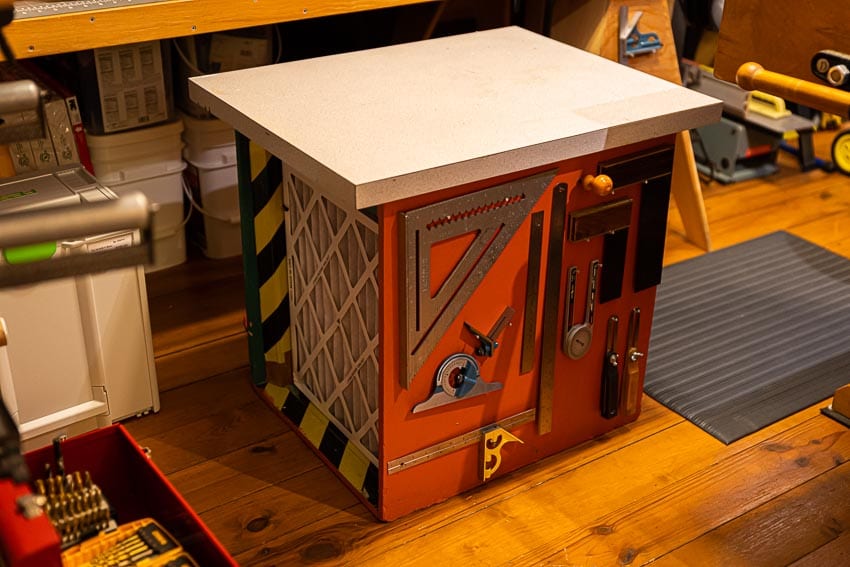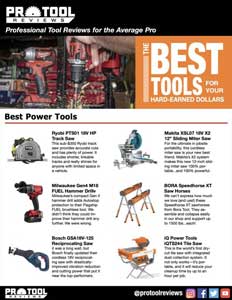Beyond using a dust collector or shop vac, you can control the dust in the air by building a DIY shop air filter. These work very much like the ones found in your AC furnace. I built my own air filter using a large 14” squirrel cage furnace fan I got used from a house trailer. It really helps control dust in my small one-car-garage-sized shop.
Table of Contents
Overview of Building a Shop Air Filter
Building a DIY shop air filter doesn’t take an engineering degree. The basic premise requires a few key parts and some general know-how. The biggest components include material for the enclosure and the centrifugal fan. You can find these in any air handler. See if you can find a used one that still has good bearings so it doesn’t make a huge racket while running.
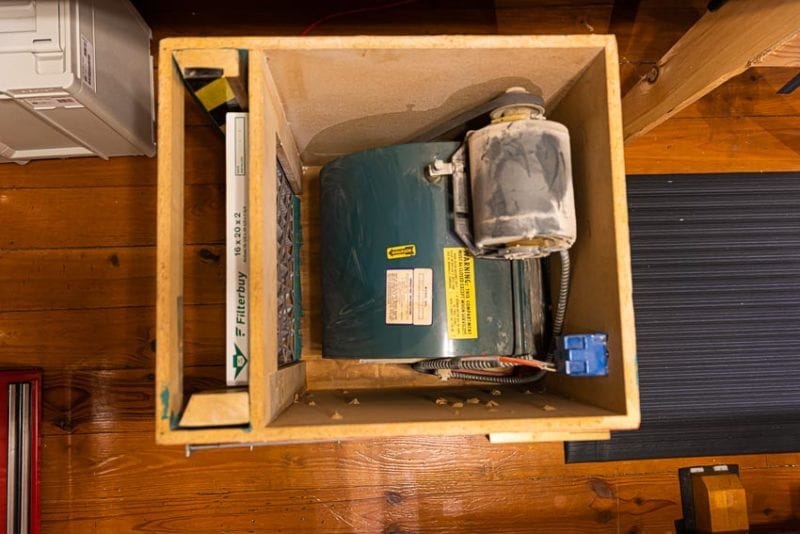
Building the Enclosure and Installing the Fan
I built the enclosure from MDF and painted it. On one side I cut the opening for the filtered intake air. The other side included a space for the blower fan exhaust. Aside from that, you need a way to switch the fan on and off and a hole for the power cord. I used an extension cord, but you could use as easily wire up a male power receptacle. That lets you use a standard extension cord to supply power to the shop air filter.
I placed the fan inside a wooden box with my opening cut into the side. I then put a FilterBuy 2” thick pleated furnace filter on the other side of the box over the hole cut specifically for it.
Testing Out the DIY Shop Air Filter
I flipped the power switch after wiring everything up and plugging in my new shop air filter. The air gets pulled in through the filter. The 2″ pleated filter does an excellent job of removing the sawdust particles floating in the air. I even placed a piece of laminated plywood on the top of the box so I could use it as an additional work surface.
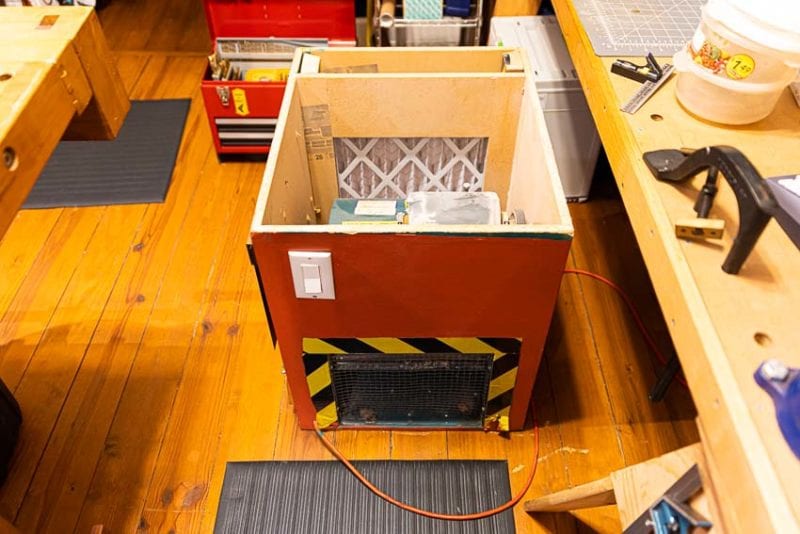
Alternatives to the DIY Shop Air Filter
Rather than build your own air filters, you can buy them already made. They also tend to have better filtration systems. General International makes a nice one that automatically turns on when it senses dust or pollen in the air. Wen offers a less expensive, budget model. Both of these filter systems hang from the ceiling, and they both have remote controls. They also have much better filter systems than the one I made which uses a furnace filter.
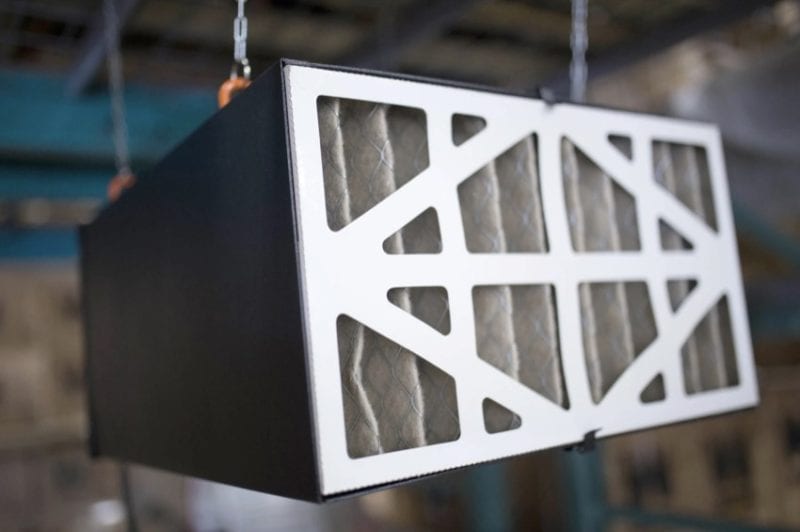
Final Thoughts
If you tend to have a lot of dust in your shop despite your best efforts at collecting dust, consider building a DIY shop air filter. It might make a lot of sense over any other efforts you can make to reduce dust. It’s also better for your health in the long run—and that matters. If you find that don’t want to tackle building one yourself, then consider picking up some of the solutions available on the market. For the price and value, they’re hard to pass up.
Have your own thoughts on controlling dust in the workshop? Leave us a comment below—and thanks for reading.

